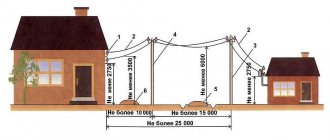Is it difficult to open a bathhouse or sauna for business from scratch today? Experienced entrepreneurs will tell you that this is more troublesome than difficult. It will be much more difficult to keep the business afloat, since there are plenty of competitors in this area. However, the advantages of the new bath complex can be: the variety of services offered, their high quality, and service at a professional level. True, for this the entrepreneur will have to study all the intricacies of this business.
- Nuances of the bath business
- Location and premises
- What documents are needed to open?
- Requirements and permissions for opening
- Equipment for baths, saunas
- Service staff
- How to promote a bathhouse or sauna from scratch?
- Sample business plan
Nuances of the bath business: pros and cons of opening a bathhouse, sauna
The bath business is quite specific and is distinguished by a large list of its inherent attractive aspects (advantages), as well as time-consuming issues to resolve (disadvantages) that an entrepreneur has to face when opening, operating and maintaining an enterprise.
+'Of the advantages of opening a bathhouse or sauna, it is worth highlighting:
- Prospects for business expansion . By opening a bathhouse or sauna in a small room, you can gradually expand to a bathhouse complex with treatment rooms, a hairdresser, a fitness room, and so on.
- Popularity of the service . The demand for health bath treatments among the population is not falling, despite the fact that many people have a bath or shower installed in their apartments. Nevertheless, people of any age love to take a steam bath. You may need a hall for meeting friends, celebrating birthdays, or holding corporate events. Today many people want to relax with benefit for their soul and body.
- Recipes for all occasions . Traditionality in the bathhouse business is definitely a plus, since the entrepreneur does not have to rack his brains about where to choose a place for a bathhouse, sauna, how to arrange the premises, and what is needed to meet the needs of clients. Everything has long been described and told. Studying the relevant literature will help you cope with all the questions that arise.
- Availability . Even with a modest budget, it is quite possible to open a small bathhouse. Having a competent business plan will contribute to the proper organization of the enterprise and will make it profitable.
)
The disadvantages of opening a sauna or steam bath come down to the following:
- Troublesome business registration . To legalize a business, you will have to go through a rather troublesome and not very fast process of paperwork. The main thing is to choose the right type of future activity and a suitable tax payment system.
- Significant costs for repairs and utilities . Due to high humidity in the premises, frequent repairs may be required. Serious costs will also be required to pay for utilities (water, electricity, etc.).
- Possibility of losing clients due to incompetence of staff . Saving on specialists can be a significant disadvantage for an enterprise. So, for example, many clients may go to their closest competitors if they have a professional bath attendant, but you do not. The quality of customer service largely determines whether they will become adherents of your bathhouse.
- Natural selection . High competition in business means that you need to take the organization of an enterprise seriously and carefully calculate the first steps so as not to go into the red and not lose your invested funds.
)
Registration of a bathhouse on a land plot
Some buildings on a land plot are subject to mandatory registration. First of all, these are capital buildings and large objects. But many people ask whether it is necessary to register a bathhouse on a summer cottage, or whether a permit is needed to build a bathhouse on the site. It depends on the purpose of operation of the building, the size and dimensions of the object. Let's look at these issues in more detail.
When can you build a bathhouse on the site?
Before building a bathhouse, you need to figure out whether it is possible to build on this land. Construction is permitted on the following types of sites:
- Individual housing construction - plots for individual housing construction that belong to a specific locality (city, town, town, etc.);
- Private household plot is a personal subsidiary plot where the construction of a residential building and other buildings is permitted. Such land is also used for agriculture without the purpose of making a profit;
- Dacha plots allow the construction of residential and commercial buildings, gardening and keeping livestock. They include SNT (garden non-profit partnership), dacha cooperatives, etc. Today, dacha plots are equal in rights to individual housing construction.
Other categories of land are not intended for construction. For example, there are territories exclusively for agricultural purposes. Then you need to design the future bathhouse. The design and functional purpose of the building will determine whether a building permit is required and whether registration of the facility is required.
We note right away that capital buildings with a second or attic floor, living rooms and connected communication networks require a mandatory construction permit.
Registration of a bathhouse on your site is necessary if it is a capital construction project, you want to confirm ownership and in the future you plan to take actions with the object and site (sell, insure, donate or inherit).
Permission to build a bathhouse
There is no need to register sheds, temporary and outbuildings, gazebos and other objects that are not related to capital construction on the land plot. Such objects are distinguished by their light weight, the absence of utility networks, living quarters and foundations, or a lightweight shallow foundation with a laying depth of up to 1 meter is allowed.
You do not need permission to build a garage on your own plot without the purpose of carrying out business activities and making a profit.
Permission is required for permanent buildings and buildings with residential premises. A standard compact lightweight bathhouse with a shallow foundation and without utility lines does not require a building permit. This is an auxiliary building that can be safely erected on the site of individual housing construction, SNT, private household plots, or a dacha cooperative.
But today, spacious and comfortable baths with all amenities are in demand. They have a solid foundation, water supply and sewerage, electricity and other utilities. Two-story bathhouses and projects with an attic include a rest room, several bathrooms and even a kitchen. For such buildings you must obtain permission!
In addition, you need to obtain permission for bathhouses that are attached to a residential building. In this case, the building plan is changed, which is then approved by the relevant authorities. This takes into account the increase in area, the impact of the extension on the strength of the foundation and walls, and compliance with sanitary and fire safety requirements.
Thus, a building permit is required for capital construction projects, namely for a bathhouse with a second or attic floor and living rooms, with connected communication networks and a solid foundation. In addition, permission is required for a bathhouse attached to a residential building.
How to obtain permission to build a bathhouse
If a permit is required for the construction of a bathhouse, it is necessary to collect and submit the required documents to the local government authority where the land plot is located, or to the nearest MFC. To obtain a permit, the following documents are required:
- Application for permission to build on a land plot (sample and form can be found on the Internet);
- A document that confirms the right to own a land plot;
- Land plan;
- Passport of the applicant or representative;
- Project documentation, which includes an explanatory note, information about utility networks, a diagram of the location of buildings on the site, etc.;
- A positive conclusion on the design documentation, if expertise is required.
If you submit documents through a representative, a power of attorney must be drawn up. The municipal authority considers the application for ten days and then makes a decision. The permit is valid for ten years from the date of receipt and is issued free of charge without state duty.
Bathhouse registration
You need to register capital buildings, regardless of their purpose, if you want them to be your property. The right of ownership gives the opportunity to dispose of property in full. In the future, you can easily sell, donate, inherit, and even insure the built bathhouse.
Modern legislation allows you to register ownership of objects located on a purchased or received land plot. This could be a bathhouse and garage, animal enclosures, gazebos and utility blocks, garden and country houses, residential cottages.
Whether to register a bathhouse, garage and other similar buildings is up to each owner to decide for himself. Note that if this is a light structure without a solid foundation up to 1 meter deep, utility networks and living quarters, there is no point in registering. Moreover, you need to pay a separate tax for each registered object!
In this case, the bathhouse is one of the outbuildings that automatically become property along with the land plot. Of course, if the plot itself is registered as a property.
Therefore, whether an object needs registration depends on its type and purpose. You can choose a solid capital structure or a compact building.
You will find many interesting projects of bathhouses with one and two floors, with recreation rooms, a terrace and an attic in the catalog of the MariSrub company.
Registration is required for a bathhouse with communication networks, living quarters, a deep foundation, i.e. if it is a permanent structure. Also subject to registration are bathhouses attached to a residential building or buildings whose layout includes a bathhouse inside the house.
How to register a bathhouse on a plot of land
You can register a bathhouse using a cadastral passport or a declaration in a simplified manner. To register, you need to make the necessary measurements, a technical passport, and link the object to the land plot. Thus, to obtain ownership of a bathhouse, you must provide the following documents:
- Application for state registration of property rights (sample and form can be found on the Internet);
- A document confirming ownership of the land plot;
- Passport of the applicant or representative;
- Land cadastral plan;
- Cadastral or technical passport of the object (for non-residential objects - a declaration, a sample and form of which can be obtained from the BTI);
- Receipt for payment of state duty. The state fee for registering real estate for individuals is 2,000 rubles, for registering a land plot - 350 rubles.
To obtain ownership of a previously built bathhouse, outbuildings, garage or garden house, according to the dacha amnesty, which is valid until 2021, you do not need to provide a building permit. However, if this is a new building, or you are just planning to build a capital facility, permission is required.
If you submit documents through a representative, a power of attorney must be drawn up. Documents are submitted to the MFC or the Registration Chamber. The application is reviewed within a month.
Requirements for the construction of a bathhouse
In order to obtain a construction permit, issue a technical passport and design documentation for registering ownership, construction, technical and sanitary standards must be observed during construction. These are the following rules and recommendations:
- The bathhouse is located at a distance of at least 3 meters from the neighboring plot and at least 5 meters from the residential building. It is desirable that it be visible from the windows of a residential building;
- The structure is installed at a distance of at least 20 meters from reservoirs and wells to avoid water pollution;
- It is advisable to carry out construction on a slightly elevated and flood-free place;
- When constructing a wooden bathhouse, wood elements must be treated with a special compound that will prevent the spread of fire in the event of a fire;
- The ceiling of the facility is insulated using fireproof materials. It is advisable to protect the area where the chimney meets the ceiling with a layer of sand with a radius of 70 centimeters to prevent fire if cracks form and damage the chimney;
- To install a chimney, you cannot use asbestos-cement pipes, which quickly collapse due to exposure to high temperatures.
- It is not recommended to use metal structures, as they become very hot and increase the fire hazard;
- Areas that border furnaces are provided with fire barriers made of plaster, tin and metal sheets or other similar materials;
- A pre-furnace sheet with parameters of at least 60x70 cm must be laid in front of the firebox of the stove. The wide side is placed along the stove;
- Doors are installed so that they open outward;
- There must be a fire extinguisher and ventilation holes in the room;
- Grounding and insulating wires are mandatory conditions for installing and conducting electricity in a bathhouse.
When designing, it is important to take into account not only the layout and number of floors, but also sanitary and fire safety requirements. Therefore, it is better to turn to professionals. The masters of the MariSrub company will perform a full range of work, which includes creating a project, installing the foundation and erecting a log house, installing and connecting utility networks, and finishing!
The MariSrub company necessarily complies with the requirements and safety standards of sanitary and technical regulations. We provide technical documentation and treat wood with protective compounds. We will build any type of bathhouse, including permanent buildings and compact courtyard buildings. An experienced architect will create an individual project or make changes to the standard version.
Source: https://blog.marisrub.ru/parcel/nuzhno-li-registrirovat-banyu/
Location and premises for baths, saunas
When choosing a location for a bathhouse, it is not at all necessary to look for premises in a busy city center. Still, this is not a place where people might drop by by chance while going for a walk or to the store for bread. They go to the bathhouse purposefully, and clients are ready to travel to the famous bath attendant even to the other end of the city. That is why opening a bath complex in a densely populated but slightly remote residential area can also be a good idea.
The optimal “square” for a future bathhouse is considered to be 100-150 meters . In this area you can easily locate two sections for women and men, locker rooms, a sauna, a small swimming pool, a relaxation room, and technical rooms. In cases where it is planned to provide additional services (massages, cosmetic procedures, haircuts), treatment rooms may be needed. Such nuances should be immediately taken into account when choosing a room.
What is more profitable, converting an old building into a bathhouse or building a new one? If we take into account that the renovation of the former state bathhouse building is commensurate with the costs of equipping any other premises, then in many cases it may be more profitable to build a bathhouse from scratch. Thanks to modern technologies and materials, building a bathhouse in our time is not so expensive in terms of time and money.
The managing partner at the Zagorodny Stil real estate agency, Petr Manko, answers:
As of today (from August 2, 2021), a simplified procedure for registering buildings on garden and dacha land plots is in effect.
You can build a bathhouse, be sure to comply with the provisions of SNiP 30-02-97 that apply to you and the rules of land use and development adopted in your area. After completion of construction, contact a cadastral engineer who will take the necessary measurements and draw up a technical plan for the structure, which you need to submit to the MFC. As a result, you will receive an extract from the Unified State Register of Real Estate for the building, confirming your ownership. I built a bathhouse - do I need to register it?
How to register a barn and a bathhouse at the dacha?
What documents are needed to open a bathhouse or sauna?
The individual entrepreneur form is quite suitable for setting up a bathhouse business. But if an entrepreneur plans to hire staff and sell alcoholic beverages, then LLC registration is required. Otherwise, you can’t count on issuing the necessary licenses. To obtain the status of a legal entity or individual entrepreneur, an entrepreneur must contact the tax office (within the period established by law) and submit the appropriate package of documents for registration.
Their list is attached:
- Confirmation from the SES and fire inspectorate that the premises comply with sanitary and fire requirements. Permission to use it.
- Enterprise activity code in accordance with the OKVED classifier. The physical education and health area, which includes the work of a bathhouse and sauna, is coded 93.04.
- Registration with the Pension and Social Funds.
- A program for sanitary and industrial control, which is drawn up directly for a given enterprise and is agreed upon with Rospotrebnadzor.
- An agreement confirming the use of rented premises or ownership of it. For an entrepreneur, the option of renting with the right to buy may be very interesting.
Specialized documents will need to be provided:
- Agreement with a bath and laundry plant for washing and cleaning bath accessories and workwear.
- Contract for maintenance of the ventilation system, including air conditioners.
- Contract for recycling of waste and fluorescent lamps.
- Agreement with the relevant office for periodic deratization, disinfection and other similar work.
Is it necessary to register a bathhouse on a summer cottage in 2021?
Reading time 8 minutes Ask a lawyer
faster.
It's free! Font size:
A+ | A−
Registration of a bathhouse on a land plot is required in most cases. However, here much depends on the characteristics of the building itself. So, if the object has signs of a permanent structure, then the procedure is mandatory.
If the structure can be disassembled and moved without problems, then registration may not be carried out.
However, usually the procedure is still recommended for implementation, which means it is necessary to become familiar with its main stages.
Is a bathhouse considered real estate?
Ownership and use of land for personal purposes usually involves its development with various objects. The first on the list of necessary buildings is a house for permanent or seasonal residence. But as additional objects, sheds, greenhouses, outdoor toilets, and baths are most often erected.
Outbuildings required for storing inventory and buildings used to satisfy various needs are not considered real estate in all cases. In particular, a bathhouse will be considered an immovable object only if it is built on a foundation. In other words, it has signs of a capital structure.
The latter is understood as a building firmly connected to the land area. The construction of such an object does not imply its further movement anywhere.
That is, if the bathhouse is built on a permanent foundation and its dismantling is impossible or is allowed, but with significant damage to the structure itself, then the object will be considered real estate. But if such a structure can be easily dismantled and transported, say, to another site, then it is considered to be a light construction. Or, in other words, movable property.
Do I need to register a bathhouse?
The question of whether it is necessary to register a bathhouse on a summer cottage or territory for other purposes has recently worried many landowners. In fact, the need for such a procedure directly depends on what type of structure the object belongs to. Everything is simple here - capital buildings are required to be registered. Temporary - no.
Simply put, if the bathhouse is built on a foundation and cannot be moved, then registration of the object in the appropriate manner is required in any case. The rule on the need to carry out a procedure in relation to real estate is enshrined in Article 131 of the Civil Code.
Registration of the bathhouse will also be required if at least one of the following signs is present:
- 2 or 3 floors;
- availability of communication systems (electricity, heating system, ventilation, etc.);
- living quarters, for example, the presence of a furnished sleeping place or rooms equipped for rest;
- the building is combined with a residential building;
- The bathhouse was built as a commercial facility for the purpose of generating income.
If the auxiliary building is considered temporary (there is no foundation, living quarters, communications), then it does not need to be registered. Such objects can exist on a land plot only on the basis that it belongs to a specific person. In this case, the bathhouse is recognized as an improvement of the dacha area and the clear property of the owner of the latter.
Another interesting fact is that the landowner does not need to obtain additional permission to dismantle and move a light structure, for example, a prefabricated bathhouse, but only if it is truly movable property. Consent from the administration for the construction of such a structure is also not required.
But if we are talking about the construction of a capital facility, then sending a corresponding notification to the local municipality is considered mandatory. In particular, coordination with the administration of the locality will be required if the future bathhouse will be large in size, it is planned to build more than one floor, or even attach a steam room to a residential building.
Registration procedure
Let's assume that the bathhouse built on the land belongs to the type of capital buildings.
For example, if a person owns a private cottage, then it is logical that a bathhouse located on the same area will not look like a small temporary building.
Most likely, this will be a fairly large structure that is used regularly. Accordingly, it is mandatory to register such an object.
If permission to build a bathhouse was not obtained or one was not required at all, then it is allowed to act within the framework of the dacha amnesty on the basis of Federal Law No. 93. This procedure will continue to exist until 2021.
The owner will need to do the following:
- Order a technical passport for the bathhouse, as well as a boundary plan of the land area on which it is located. Documents are required without fail, because it is on their basis that the registration of the object is carried out. You can contact the BTI for the preparation of a technical passport, and for drawing up a site diagram, you can contact a state or private cadastral engineer. Moreover, you will need to pay for the service, and first make sure that the specialist has the appropriate license.
- Collect documents. The list has been shortened as much as possible. In addition to technical documentation, the applicant will need to present a passport and papers certifying the right to legal ownership of the land - an extract from the Unified State Register or a certificate of title. Additionally, you may need a document on the basis of which such a right arose. This could be a land purchase agreement, a deed of gift or a will.
- Pay the duty fee. The amount will be 2000 rubles. The receipt must be included in the package of documents for registration.
- Submit a request personally to Rosreestr or through the registrar of any of the offices of the Multifunctional Center. You can also fill out the application form here. You can also use the State Services website as a remote method, however, in this case you will need to identify your personal account.
When applying directly to Rosreestr, the registration period will be about 7-10 days. If you submit a request to the MFC, the period may increase by 2-4 days. However, in both cases, the owner of the bathhouse will be given an extract containing information about him and the real estate owned by him.
If the registration authority refuses to accept the application, then you can go to court to recognize the ownership of the bathhouse . In fact, such cases are not uncommon even if the title documentation for the object is in order, so usually judges go along with the plaintiffs.
Taxation
It is worth mentioning separately the issue of collecting taxes for additional buildings located on land plots.
Relatively recently, rumors arose that all outbuildings, including bathhouses and sheds, will need to be registered.
Allegedly, such actions are necessary to collect taxes from any buildings that are erected on land for personal use. In reality, everything is somewhat different.
The rule applies exclusively to permanent buildings . As stated in paragraph 1 of paragraph 130 of the Civil Code of the Russian Federation, real estate is an object that has a strong connection with the land.
In other words, inaccessible or difficult to move. In short, the tax is paid specifically for immovable buildings, provided that the area is more than 50 square meters. m.
If it is less, then a tax benefit begins to apply, exempting you from the fee.
Accordingly, in most cases, owning a bathhouse built on a foundation will require the owner to both register it and pay a property tax contribution. In fact, the procedure for registering an object is the basis for collecting a fee. But a temporary structure will not be subject to taxation, because it will be classified as movable property.
However, it is likely that you will need to prove the right to remove the obligation to make a tax contribution. In this case, it is necessary to contact the BTI and order a conclusion from a cadastral engineer indicating that the object does not have a close connection with the land. If the expert confirms that the bathhouse is movable property, then you will not need to pay tax.
What happens if you don’t register a bathhouse?
It is important to understand that only the registration procedure can assign ownership of a bathhouse to a specific person. It is from this moment that the operation and, in general, the presence of a bathhouse on a land plot are considered legal. Also, based on registration, the object is allowed for insurance.
If the real estate has not been registered, then there is a risk that it will be recognized as an unauthorized construction . And this is fraught with compulsion to demolish the object.
In addition, for non-payment of property taxes, you will be required to pay a fine of 20% of the total accumulated collection for 3 years. Of course, the amount of the tax contribution itself will also need to be repaid.
Registration of a bathhouse is required only if the structure is a permanent structure . Tax on real estate is calculated on the same basis.
But if the building can be easily dismantled and moved to another land area, then there is no need for registration.
Such a movable object will by default be considered the property of the owner of the site on which it is located.
Source: https://law03.ru/land/article/nuzhno-li-registrirovat-banyu-na-dachnom-uchastke
Requirements and permits for opening a bathhouse, sauna
The main requirements when opening a bathhouse or sauna will be fire safety and sanitary requirements.
They are quite strict, but they must be followed to avoid fines:
Your loan has been approved!
- The area of the room for a bathhouse or sauna cannot be less than 70-80 meters.
- It is prohibited to install saunas in the basements of houses or in houses where more than 100 people live. The premises must have a separate entrance.
- Wall cladding cannot contain resinous substances, so larch and spruce cannot be used as finishing elements.
- The stove in the steam room should be placed from the walls at a distance exceeding 0.2 m. Every eight hours the stove is temporarily turned off.
- It is also necessary to ensure good air circulation in the steam room and this can be done by the ventilation system.
- Installation of fire extinguishing systems and fire extinguishers is mandatory.
- All washing equipment and furniture should be easily treated with hygiene products for disinfection purposes.
Compliance with sanitary and construction safety standards
To avoid possible problems during the operation of the building, it is recommended to follow the sanitary and construction standards established by SNiP:
- The construction of a private bathhouse on your own land is allowed at a distance of 2.5 meters from neighboring plots and 5 meters from residential buildings.
- The distance of the building from the roadway is at least 6 meters.
- The distance to the reservoir is up to 22 meters. A similar requirement is imposed on the location of the bathhouse in relation to a hydraulic structure - a well or well.
- The construction of buildings is prohibited in areas prone to flooding.
- When choosing the location of the bathhouse, you should take into account the wind rose that is present in the area. This will prevent smoke in the neighboring area during regular heating of the bathhouse.
- No less important is the choice of method for organizing the drainage system. You can install sealed septic tanks or a full-fledged treatment system. The permissible distance between the sewage system and the neighboring area is 1.5 meters.
Equipment necessary for organizing a bathhouse, sauna
A significant cost part of the budget when arranging a bathhouse or sauna most often falls on the purchase and installation of equipment. And you shouldn’t skimp on this! Everything, from gaskets and filters, to compressors and the oven in the steam room, must be reliable and of high quality. After all, the operation of the bathhouse depends on the operation of the equipment. You will also need furniture and accessories, periodic purchases of consumables and bath accessories.
| Equipment name | Estimated cost, rub. |
| Equipment | |
| Stove for Russian bath | 90 000-100 000 |
| Hot tub 2-seater | 16 000-20 000 |
| Small pool | 750 000-800 000 |
| Infrared cabins | 90 000-220 000 |
| Prefabricated saunas | 92 000-96 000 |
| Furniture and accessories | |
| Shower cabin | 20 000-45 000 |
| Wooden bowls (basins) | 1,000 for 1 piece. |
| Pouring vat | 10 000 |
| Benches | 3,000 for 1 piece. |
| Steam room shelves | 7 000-7 500 |
| Tables, cabinets for the rest room | 10 000-12 000 |
| Cushioned furniture | 20 000-25 000 |
| TV, DVD | 25 000-30 000 |
| Tennis or billiards table | 10 000-15 000 |
Registration instructions
Registration of objects is carried out by the department of the cadastral chamber. In order to register a bathhouse or other facility, the owner needs to submit an application containing the following data:
- Address of the location of the object requiring registration, indicating the cadastral number of the site.
- The purpose (goal) of the object.
- Category, floor, external dimensions and area of the object.
- List of materials used in construction.
- Availability of utility networks and their connection to the facility requiring registration.
Please note that for confirmation you must attach a bathhouse design or other documents confirming the above information. If the building was erected by a developer, the documents can be taken from them. If the bathhouse was built according to your own design, then other documents will be required confirming compliance with the current SNiP and GOST standards. These may include: drawings of a personally drawn up project, receipts confirming the purchase of materials, etc.
Up
Bath and sauna service personnel
When selecting staff for customer service, you must pay attention to the professional qualities of the staff. The main character of the Russian bathhouse, of course, is the bathhouse attendant. The increase in demand for the service largely depends on his ability to work with a broom and clients.
Attention : Since the bathhouse attendant must also be a psychologist, physiotherapist, and also an ambulance in emergencies, it is advisable that his resume be supplemented with a diploma or a certificate of completion of special courses.
In addition to the bathhouse attendant, the staffing list should include:
| Job title | Responsibilities | Salary, rub. |
| Administrator | Receiving calls, monitoring employees working on shifts, introducing visitors to the service, etc. | 20 000 |
| Security guard | You will definitely need it if alcohol is sold in the bathhouse. In general, he must maintain order. | 18 000 |
| Bartender | The ability to please customers will help attract new visitors. If there is no bar in the bathhouse, the position of bartender is canceled. | 17 000 |
| Helper worker | Useful for collecting firewood, cleaning the street, and helping other employees. | 12 000 |
| Masseuse) | Any additional service will help increase the flow of clients, especially if it is a high-class master. | 18 000 |
| Cleaning woman | Cleanliness and order are needed in any establishment. | 12 000 |
With a 12-hour working day, one employee can combine several positions. Although in large cities many saunas and baths operate around the clock, which means that the staff should be doubled.
I built a bathhouse - do I need to register it?
The answer to this question depends on the size of your bathhouse, whether it has signs of real estate and your civic position.
If this is a typical “ready-made bathhouse”, which is brought assembled to the site and mounted on a foundation of small concrete blocks or something similar, then there is no point in registering such a structure.
If you built something more serious with a capital foundation, then the situation is as follows.
If your bathhouse is more than 50 sq.
meters, then, by evading registration of ownership of such a property, you are evading payment of property tax with all the ensuing consequences, which may occur tomorrow, or may not occur for quite some time. If the bathhouse is less than 50 sq. meters, then property tax is not charged due to the tax incentive for outbuildings.
On what categories of lands can one build and on which ones cannot?
Is construction allowed on SNT lands?
The actual situation today is that most gardeners, not only bathhouses, but also houses, are not very actively registering ownership. As for a building permit, it is not required for outbuildings. Moreover, recently a notification rather than a permitting procedure has been introduced for the construction of residential and garden houses.
The director of the secondary real estate office of Est-a-Tet, Yulia Dymova, answers:
The dacha amnesty is still in effect at SNT, so construction permits for such objects are not obtained. All additional buildings are drawn up according to a declaration, information in which is entered based on the decision of cadastral engineers.
The director of the legal service “Unified Center for Protection” (edin.center) Konstantin Bobrov answers:
It is necessary to register the right to real estate (outbuilding). If we are talking about a bathhouse located on a property, then you do not need to knock on the threshold of authorities to obtain permission. We are guided by the so-called “dacha amnesty” law, also known as FZ-93.
Dacha amnesty
How to legalize guest houses for rent?
It is unlikely that the ownership of your bathhouse will be registered in a simplified manner, but you will need:
- technical passport of the object (produced at BTI);
- technical plan of the site (prepared by a cadastral engineer);
- Your passport.
Since in our case the bathhouse was built in 2009, Rosreestr can and most likely will refuse state registration of the right. In this case, after contacting the MFC and receiving a refusal, you must file a claim with the court for recognition of ownership rights.
Such situations are not uncommon, even if all title documents are in order. However, judges, as a rule, accommodate unlucky summer residents and make a decision in their favor, on the basis of which property rights are registered.
Such a proactive step will prevent a claim for demolition against the owner of the building.
Private practicing lawyer Victoria Suvorova (Pyatigorsk) answers:
According to the law, you do not need to obtain a building permit to build a garage, utility room, shed or bathhouse.
Yes, from this year, all owners of buildings on their land (no matter whether it is a dacha in SNT or construction on individual housing construction lands) must register ownership of them in the prescribed manner. After this, you will receive tax on these buildings as well.
You can register ownership of a bathhouse using a tax return in a simplified manner.
The purpose of the land contradicts the building permit - what to do?
How to legalize an already built house?
Mikhail Afrikanov, head of the Istra Valley project, answers:
Today, all capital construction projects, be it a bathhouse or a garage, must be registered. If you do not do this, then, most likely, the fact of the location of the OCS on the site will sooner or later be recorded by aerial photography, which is fraught with unpleasant proceedings.
For registration, a cadastral passport or a declaration in a simplified form is required. But you need to call a cadastral engineer and make a technical plan with coordinate reference to the land plot. It is important that a bathhouse built before 2021 is covered by the dacha amnesty, so you do not need to provide a building permit for registration.
Having collected all the necessary documents (application, document confirming ownership, applicant’s passport, land cadastral plan, technical plan of the property (or declaration)) and having paid the state fee, you can go to the MFC or registration chamber to register your property.
Text prepared by Maria Gureeva
Do not miss:
All materials in the “Good Question” section
Is it difficult to legalize a country house after purchase?
Can I make an extension to a ground floor apartment?
I added a balcony - can it be legalized?
The articles do not constitute legal advice. Any recommendations are the private opinion of the authors and invited experts.
Source: https://www.domofond.ru/statya/postroil_banyu__nado_li_ee_registrirovat/7571
How the dacha amnesty works from August 2021
If you have a dacha, house or plot, figure out how to legalize all this under the dacha amnesty:
- Dacha amnesty refers to several different provisions of the law. This is not one document, and everything is complicated.
- Land plots allocated on any basis before October 30, 2001 can be registered as ownership upon application and a document of rights. This is indefinite, nothing has changed.
- After August 4, 2021, new houses are built without permission, but by notification. The law was adopted a year ago, and it has not changed either.
- If the house began to be built before this date, it can be legalized by notification, without a permit for construction and commissioning. That is, if you began to build a house without permission, then it can be legalized without a trial. This order was extended until March 1, 2021 and is now called another dacha amnesty.
- Houses on garden plots that are not registered as property can be legalized without notification - according to the technical plan and declaration. But only until March 1, 2021. This is also a dacha amnesty, but it has its own nuances. Details are in the article.
- Notifications are not required for garages and outbuildings. They are drawn up according to the declaration and technical plan. It was like that before.
- The state fee for registering an amnesty property is 350 rubles. The cost of cadastral registration and technical plan is several thousand.
A completed or under construction house can be legalized by notification until 2021
As of August 4, 2021, construction permits were canceled. Previously, you had to ask local authorities whether it was possible to build a house with these parameters. Now it’s enough to warn them. In fact, the procedure is still similar to approval, but it has become a little simpler.
But this applied to houses that began to be built in August, when the law came into effect. And for those houses that began to be built without permission before the amendments, notifications were allowed to be submitted only until March 1, 2021.
That is, the house is already under construction or ready, but there is no permit for it. Then the state seems to say: “Okay, since it’s already been built, submit a notification and we’ll assume that everything is legal.
Such a house is not considered an unauthorized construction.”
But those who did not have time to sort out the documents before March 1, 2021, could then legitimize the house only through the court. Or we would have to somehow cheat with the documents. Otherwise, the house would be considered an unauthorized construction.
How to save, spend less and earn more
We tell you in our free newsletter. Subscribe to receive the best stories in your inbox twice a week
The simplified procedure for houses on garden plots was not extended
There are areas that have a specific purpose - gardens. Previously, there were also country houses - for country house construction or for gardening, but now they have all automatically become garden houses.
On such a plot you can not only install a greenhouse and plant a vegetable garden, but also build a real residential building.
And although the site is not intended for individual housing construction, such a house will be allowed to be legalized, to live in it and to obtain permanent registration.
Nothing has changed with garden plots: you can put a greenhouse there, but you cannot build a house.
For houses on garden plots, a separate simplified registration procedure was in effect. Until March 1, 2021, it was possible to obtain a registration certificate even without notification. And then, based on the technical passport, register ownership. This speeded up and simplified the process specifically for garden plots.
But the amnesty was not extended for them. From March 1, 2021, even on garden plots, houses must be registered by notification - just like individual housing construction. Without notification, it will not be possible to issue a registration certificate, and without a registration certificate there will be no title.
A house on a garden plot without ownership rights can be registered without notice
According to Article 130-131 of the Civil Code of the Russian Federation, immovable objects associated with land, the movement of which is impossible without proportionate damage, must be registered as property.
The legislation allows for the absence of registration for the following structures:
- outdoor toilets;
- dog house;
- Summer shower.
Before you register a bathhouse as your property, you must have a permit for its construction.
For some reason, some laws in Russia are becoming very complicated. So it is with houses on garden plots.
On the one hand, they now require notifications, just like houses on plots for individual housing construction. But one clause was removed, and another was added to the law on real estate registration.
Until March 1, 2021, a garden house can still be registered as a property without notification, construction or commissioning permission. To do this, the following conditions must be simultaneously met:
- There is a technical plan for the house.
- The rights to a land plot are confirmed by some documents.
- The ownership of this land is not registered in the Unified State Register of Real Estate.
When registering property rights, the registrar will check whether the general conditions of registration are met and whether there are grounds for refusal. For example, whether the certificate for the allocation of land has been falsified and whether someone else is laying claim to this plot.
If the garden plot has already been registered as a property, you will have to submit a notification to register the house.
For land plots allocated before 2001, the amnesty is unlimited
For some land plots there is an indefinite amnesty. The new law did not cancel or extend it.
Here are the conditions for simplified registration of land ownership:
- The purpose of the site is for personal subsidiary farming, dacha farming, vegetable gardening, horticulture, individual garage or individual housing construction.
- The land was allocated until October 30, 2001.
- There is any document confirming the rights to the plot: a deed, an agreement, a certificate, an extract from the household register.
- The application is submitted by the person to whom the land was allocated or his heir.
With these documents, a plot of land that was allocated many years ago for indefinite use or lifelong ownership can be re-registered as ownership for 350 rubles. And then legitimize the house that was built there. Even if the type of right is not indicated in old documents, it is considered that the land has been transferred into ownership.
Houses on such plots must be registered by notification or declaration, this depends on the purpose of the plot. If it is allocated for individual housing construction, you need to submit a notification in the usual manner or under an extended amnesty. If the house is on a garden plot, a technical plan and a declaration will suffice, and a notification will not be required.
How to promote a bathhouse, sauna from scratch: marketing and advertising of business
Advertising of baths and saunas can begin 1-2 weeks before opening.
Standard methods for promoting such establishments are:
- Flyer distribution.
- Posting advertisements.
- Advertising in media and transport.
- Submitting advertisements on local online forums (on the Internet).
No one is about. As practice shows, it works well to attract customers.
Help : It will be relevant for any business to develop promotions, for example, “two hours for the price of one”, a system of discounts for loyal customers, various bonuses.
If you create comfortable conditions for visitors, competitors are unlikely to lure them away.
Additional uses
In addition to the main intended purpose, according to current standards, land for individual housing construction can be used for the following needs:
- Gardening and horticulture, not aimed at making a profit.
- Keeping pets.
- Construction of artificial reservoirs that do not contradict established legal norms.
- Construction of buildings for temporary residence (cabins, trailers for builders, etc.).
- Arrangement of a personal plot, including for decorative purposes.
- Construction of adjacent (auxiliary) premises. These include: sheds, garages, storerooms, bathhouses, etc.








